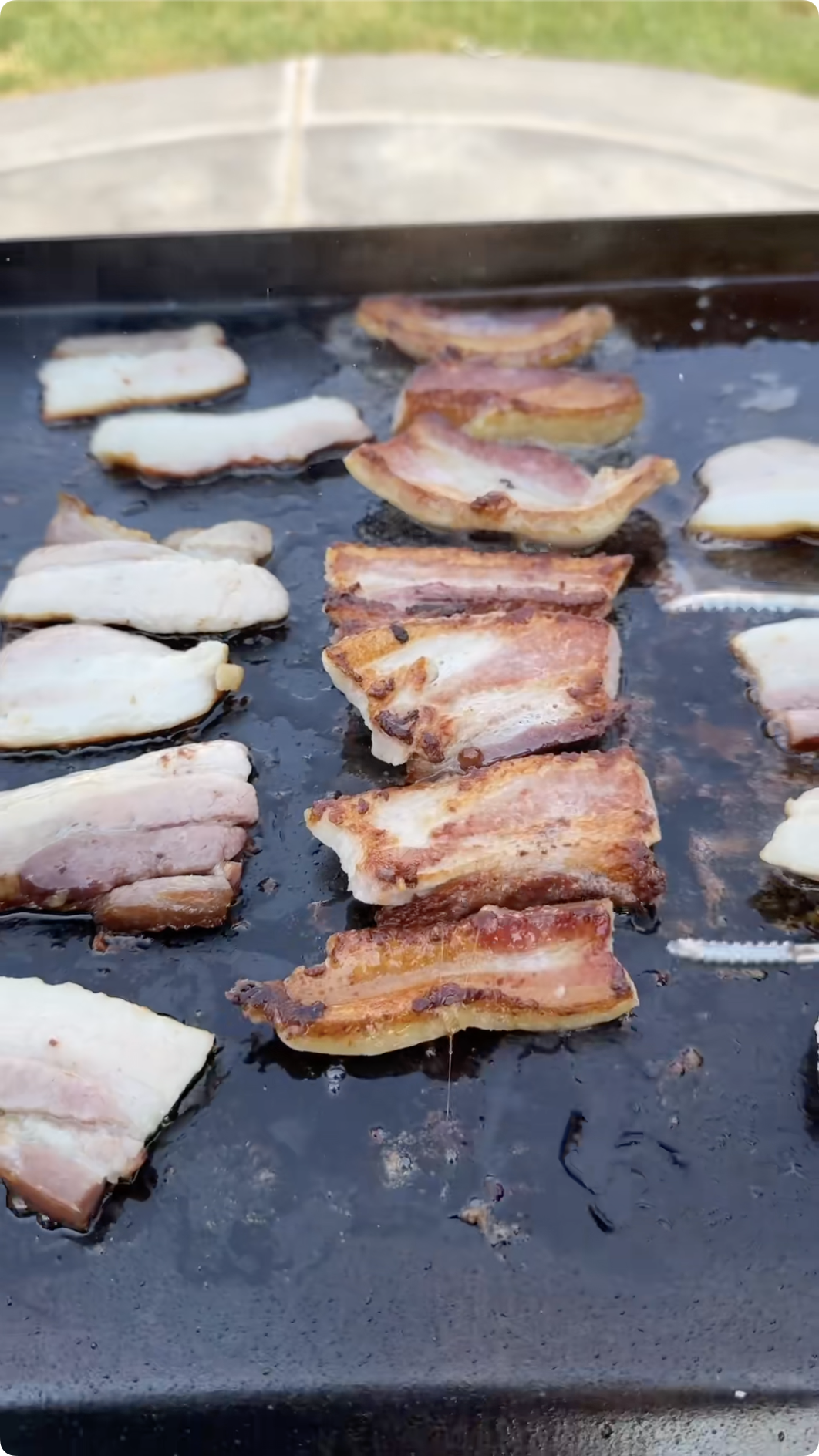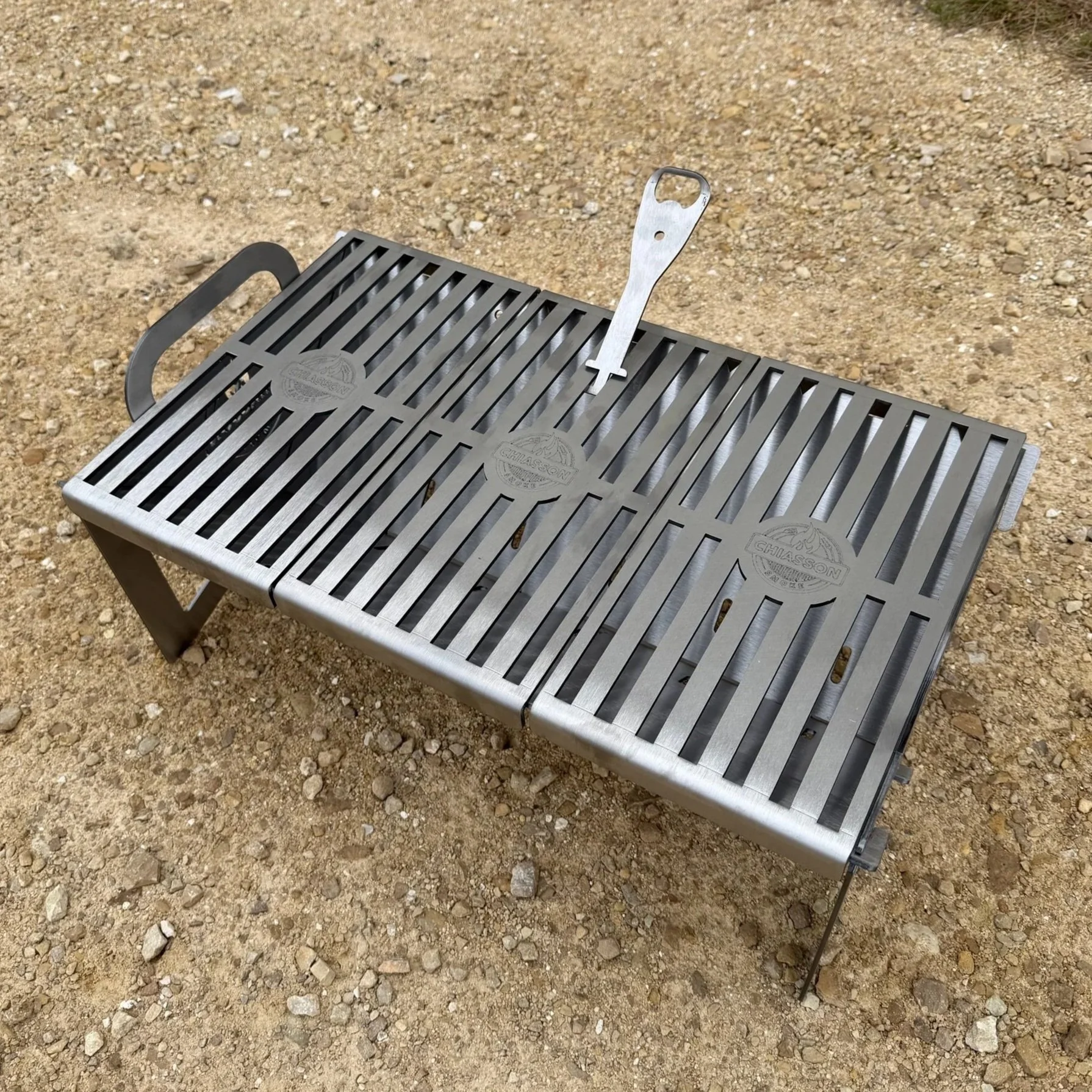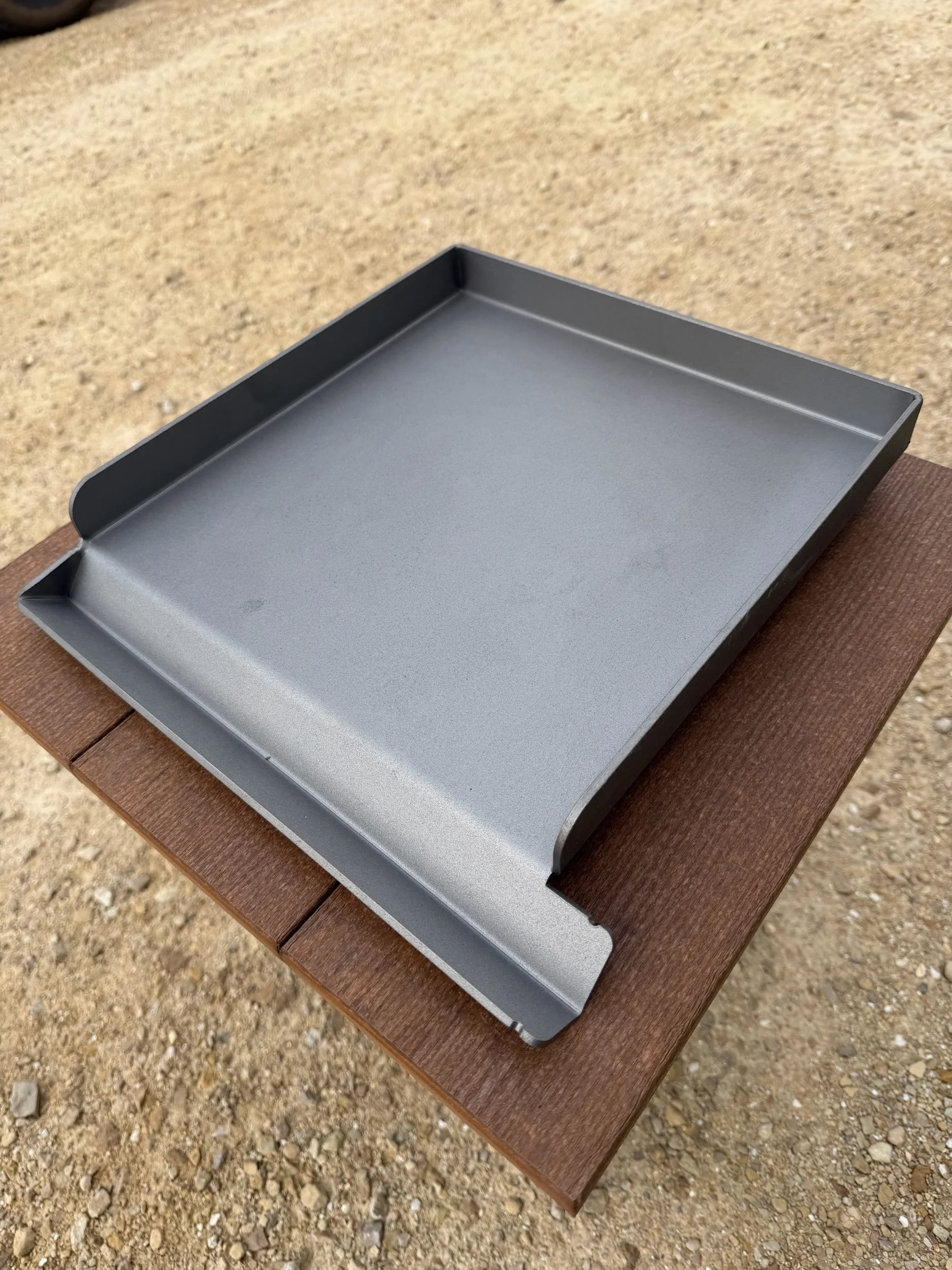How to Cook Bacon Outdoors
Few foods can grab attention like the smell of bacon sizzling in the open air. Whether you’re camping, tailgating, or just having fun in your backyard, cooking bacon outdoors makes the whole experience feel like an adventure. The crackle of fat, the smoky flavor, and the golden strips curling up in the pan—there’s nothing quite like it. But while cooking bacon inside is simple, cooking it outside comes with its own challenges and rewards.
With the right setup and a little patience, you can master the art of outdoor bacon.
The Gear You’ll Need
Cooking bacon outdoors doesn’t take much, but having the right gear makes it easier. A cast-iron skillet is your best friend. Cast iron holds heat evenly, so you won’t end up with half-burned, half-raw bacon.
A flat-top griddle also works well if you’re cooking for a group. For campers, a rocket stove or a small grill such as the Chiasson Smoke Hauler Grill makes the job simple. If you want the classic feel, you can go right to the campfire itself. Just make sure you have a steady surface, like a grate over the coals.
Don’t forget the little things: long tongs for flipping, a spatula if you’re using a griddle, and some paper towels for blotting grease. If you plan on draining bacon fat, bring along a heatproof jar or tin can. That way you won’t pour it on the ground, which can attract unwanted animals if you’re camping.
Cooking Over a Campfire
There’s something primal about cooking bacon over an open flame. The trick is to wait until the fire burns down to glowing coals. Flames are too hot and will scorch the bacon before it cooks through. Set your skillet or grate over the coals, then lay out the bacon strips. You’ll hear the sizzle almost immediately. The bacon should cook slowly, releasing fat into the pan as it goes. Resist the urge to turn it too often; let one side crisp before flipping.
If you’re feeling adventurous, try wrapping strips of bacon around sticks or skewers and holding them over the fire like marshmallows. This method takes practice, but it’s a fun way to turn bacon into a campfire snack. Just watch for dripping grease—it can spark up if it hits hot coals.
Using a Grill
Grills are another great option, especially if you already have one going for burgers or steaks. To keep things simple, use a cast-iron skillet right on the grate. This way, the bacon won’t slip through the gaps.
Otherwise, use a grill that has a griddle attachment, like the Chiasson Smoke Hauler Grill.
If you want to try direct grilling, lay thick-cut bacon across the grates perpendicular to the bars. Thicker slices hold up better and won’t fall apart. The smoky flavor from the grill gives bacon a bold taste, and the fat dripping down adds fuel to the fire. Just keep a close eye out for flare-ups.
Portable Stoves and Skillets
For hikers and campers who like a more controlled cook, portable stoves are perfect. A rocket stove heats a skillet evenly, so you can cook bacon just like at home. The only difference is the view—mountains, lakes, or forests instead of your kitchen walls. If you’re cooking for a group, pack a flat-pack grill or rocket stove with a griddle attachment so you can fit more strips at once. It saves time and keeps everyone happy.
Bacon on a Stick
Yes, bacon on a stick is a real thing, and it might be the most fun way to cook outdoors. Take a long, sturdy stick, clean the bark, and spiral-wrap a strip of bacon around it. Hold the stick over the fire and rotate slowly. The bacon crisps up like a salty, smoky ribbon. Kids and adults both love this method, and it turns bacon into an activity as much as a meal.
Tips for Success
Patience is the secret ingredient when cooking bacon outdoors. Fires and grills don’t give you the same steady heat as a stove, so things can take longer. Keep your strips spaced out instead of piling them on top of each other, so they cook evenly. Watch the grease closely, especially near open flames, since bacon fat is flammable. If you see a flare-up, move your pan or food away from the fire for a moment until it calms down. And make sure to educate yourself on outdoor cooking safety tips in general.
Another trick is to bring thicker bacon when you’re cooking outdoors. Thin slices tend to burn too quickly, while thicker cuts stay juicy and forgiving even with uneven heat.
Serving Bacon Outdoors
Bacon outdoors doesn’t need much—just a plate and some hungry people. Still, it’s worth pairing it with foods that shine in outdoor cooking. Lay strips on fresh bread for a quick sandwich, crumble bacon over campfire chili, or mix it into scrambled eggs. You can even go sweet and dip bacon into a little maple syrup if you’re having pancakes. No matter how you serve it, bacon adds that perfect crunch and salty bite that ties the whole meal together.
The Joy of Outdoor Bacon
Cooking bacon outdoors isn’t just about food—it’s about the experience. The smoky air, the laughter around the fire, and the joy of watching strips curl and crisp make it more than a meal. It’s a memory in the making. Whether you’re frying it in a skillet, grilling it on the grate, or twirling it around a stick, bacon outdoors has a magic all its own. So next time you pack for a trip or light up your backyard fire pit, don’t forget the bacon. It might just become the best part of your day.









